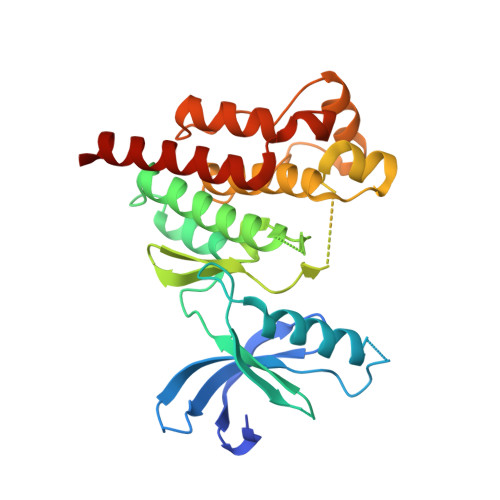Selectivity switch between FAK and Pyk2: Macrocyclization of FAK inhibitors improves Pyk2 potency.
Farand, J., Mai, N., Chandrasekhar, J., Newby, Z.E., Van Veldhuizen, J., Loyer-Drew, J., Venkataramani, C., Guerrero, J., Kwok, A., Li, N., Zherebina, Y., Wilbert, S., Zablocki, J., Phillips, G., Watkins, W.J., Mourey, R., Notte, G.T.(2016) Bioorg Med Chem Lett 26: 5926-5930
- PubMed: 27876318
- DOI: https://doi.org/10.1016/j.bmcl.2016.10.092
- Primary Citation of Related Structures:
5TO8, 5TOB - PubMed Abstract:
Herein, we describe the synthesis of Pyk2 inhibitors via macrocyclization of FAK and dual Pyk2-FAK inhibitors. We identified macrocycle 25a as a highly potent Pyk2 inhibitor (IC 50 =0.7nM), with ∼175-fold improvement in Pyk2 potency as compared to its acyclic counterpart. In many cases, macrocyclization improved Pyk2 potency while weakening FAK potency, thereby improving the Pyk2/FAK selectivity ratio for this structural class of inhibitors. Various macrocyclic linkers were studied in an attempt to optimize Pyk2 selectivity. We observed macrocyclic atropisomerism during the synthesis of 19-membered macrocycles 10a-d, and successfully obtained crystallographic evidence of one atropisomer (10a-AtropB) preferentially bound to Pyk2.
Organizational Affiliation:
Department of Medicinal Chemistry, Gilead Sciences, Inc., 333 Lakeside Drive, Foster City, CA 94404, USA. Electronic address: Julie.Farand@gilead.com.















